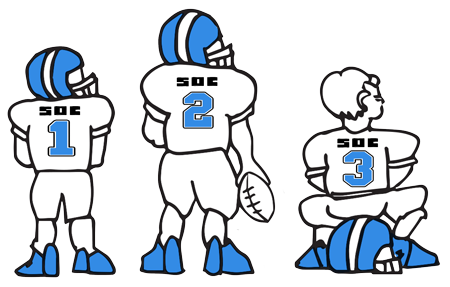ICFiles
SOC 2

Secure File Transfer Soc 2 starts at $1 per month
VAT - Those Three Letters Mean A Lot!
Tax and Financial News
July, 2009
VAT - Those Three Letters Mean A Lot!
It's no secret that the United States is in an economic downturn. Unemployment is high and the government is pumping massive stimulus funds into the economy. The United States Treasury is borrowing trillions of dollars to prop up the economy, and the President has outlined an ambitious plan to reinvent the country's healthcare delivery system. None of this is really news.
What will be news is how the government will fund the repayment of the nation's debt and the estimated $1.6 trillion cost of creating a national healthcare system. Some of the proposals floated to fund these healthcare changes include taxing employer-provided health benefits, which now save employees $226 billion per year; and taxing greenhouse gas emissions, which is commonly referred to as "cap and trade." The President has also looked at reducing Medicare and Medicaid payments to providers as a way to help pay for his plan.
One interesting financing mechanism is imposing a value-added tax, or VAT, which taxes goods at each stage of production. VAT, which has been floated as a revenue-raising measure since the 1970s, is widely used in Europe. In the United States, however, VAT has been considered political poison - so much so that it has brought down powerful legislators who supported it. Since VAT is being considered as an effective way to raise revenue to cover healthcare costs, you should know how it works.
First, let's talk about how the tax works. In a nutshell, it taxes the value added to a product at each stage of production. As an example, you buy a television at your local retailer. The steps in the process and the taxes charged might look something like this:
| Production Stage | Sales price of finished product | 1.5% Value-Added Tax Paid | Credit for previous taxes paid in the process | Cumulative tax paid |
| Raw materials are sold to manufacturer | $1,000 | $15 | $ - | $15 |
| Manufacturer sells product to wholesaler | $2,000 | $30 | $15 | $30 |
| Wholesaler sells product to retailer | $3,000 | $45 | $30 | $45 |
| Retailer sells product to consumer | $4,000 | $60 | $45 | $60 |
Since the tax is meant to cover only the value added, any tax paid in prior steps is subtracted from what the seller owes. For example, on final sale, although youÃâll pay $60, the seller will actually pay $15 ($60 at your purchase, less $45 taxes previously paid in other steps). As you can see, the additional cost of a 1.5% VAT is $60 to the consumer. Add the sales tax paid (most likely on $4,000) and you can begin to see that the VAT has the potential to raise substantial sums. For example, it is estimated that a rate of 1% to 1.5% will generate $600 billion over a ten-year period. Double that and you have the funds the government needs to pay for healthcare reform.
On first glance, this seems to be the fairest taxation scheme. One of the conservative arguments about income taxes has been that many people do not pay their fair share of that tax. In a VAT scenario, the tax is built into the product, so everyone pays some level of tax.
The VAT would certainly shift some of the tax burden to low-wage earners and those on welfare and other government programs; this is considered to be a drawback by liberal thinkers. After all, the guy making $100,000 per year can surely afford to pay a little more, so the VAT doesn't really hurt him. On the other hand, to a guy barely scraping by, $1.50 added to his grocery bill might mean going without on some items.
The VAT is an attractive financing vehicle in today's environment. When you consider that it would affect nearly everything you use on a daily basis, the revenue-raising possibility is enormous. Whether the U.S. Congress will enact the VAT remains to be seen, but now you have a little insight to help you better understand the debate as it plays out. If you have questions on this or any other tax or business related matters give us a call. In the meantime, have a terrific Fourth of July.
These articles are intended to provide general resources for the tax and accounting needs of small businesses and individuals. Service2Client LLC is the author, but is not engaged in rendering specific legal, accounting, financial or professional advice. Service2Client LLC makes no representation that the recommendations of Service2Client LLC will achieve any result. The NSAD has not reviewed any of the Service2Client LLC content. Readers are encouraged to contact their CPA regarding the topics in these articles.
Dynamic Content Powered by Service2client.com
SEO Content Powered by DynamicPost.net






